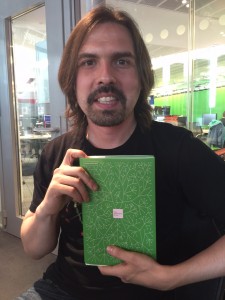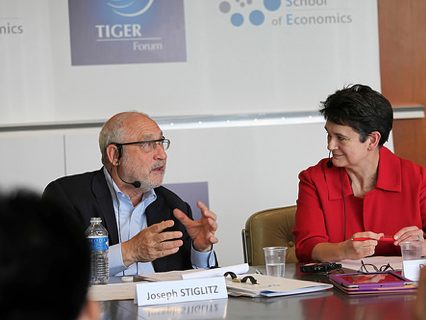For reasons linked to book and bag size, and journey modes and lengths, I’ve been reading three books at once – Jennifer Homans’ Apollo’s Angels (a monumental history of ballet, non-portable), a biography of Claude Shannon, and Daniel Dennett’s Intuition Pumps and Other Tools for Thinking.
I’ve finished the middle one now, A Mind At Play: How Claude Shannon Invented the Information Age by Jimmy Soni and Rob Goodman, and thoroughly enjoyed it. When I described it to some friends at the weekend, to my surprise they turned out never to have heard of Claude Shannon. Those of us with interests in digital know of him as the author of a profoundly important paper launching information theory. It seems this is the first full biography, and it starts from his childhood in a small town in the midwest via wartime service in cryptograhy and then a long stint at Bell Labs to MIT. (He met Alan Turing during the war but both were doing work so secret they didn’t dare talk to each other about it.)
I’m not sure I’d seen a photo of Shannon before and he looks like a blend of Samuel Beckett and Albert Camus. He seems to have been rather reclusive, whimsical – rider of unicycles, keen juggler, creator of gadgets such as a machine to turn itself off, and so on. His most famous creation – in that it got him to public attention – was a mechanical maze-solving mouse (named Theseus) that would learn to find a piece of (metallic) cheeese. (Although, Shannon explained, the maze solved the mouse rather than the other way round. The information was in the maze, and it and the mouse formed a system.)
After 1948 when his paper was published, Shannon was a celebrity and much in demand for lectures. The book explains that he had few graduate students because most were too much in awe of him to dare ask him to supervise their work. Shannon’s paper (later a book), A Mathematical Theory of Communication picked up the idea that information is a meaningfully quantifiable entity, defined communication as the reproduction of messages, transmitted as a signal, subject to noise, to a received. Thus abstracted, all kinds of things could be interpreted as the communication of information. Importantly, Shannon introduced the role of uncertainty (information is a measure of uncertainty overcome), redundancy (uninformative but helps mitigate noise), and defined the bit, an amount of information that results from a choice between two equally likely options. A message is the elimination of all irrelevant signals from the available pool. Without Shannon’s paper, the modern era would not exist.
The book does a good job at explaining the ideas in combination with rattling good storytelling about the life of someone who was clearly an extraordinary character. Shannon settled down at MIT into an enjoyable life of making gadgets, attending conferences and playing the stockmarket. He does deserve to be far better known and this biography is a great place to start.
[amazon_link asins=’1476766681′ template=’ProductAd’ store=’enlighteconom-21′ marketplace=’UK’ link_id=’9efbdcfe-9d20-11e7-af12-5f3f9c61493e’]
[amazon_link asins=’0252725484′ template=’ProductAd’ store=’enlighteconom-21′ marketplace=’UK’ link_id=’c22f18ae-9d20-11e7-930b-6de2e6bcad4c’]


